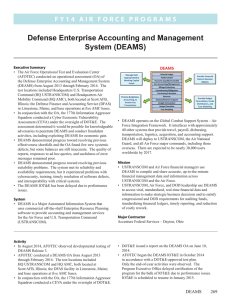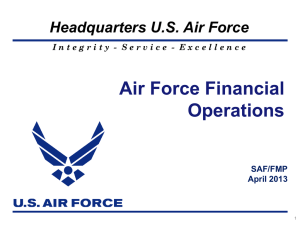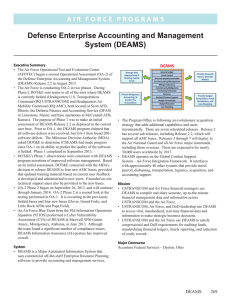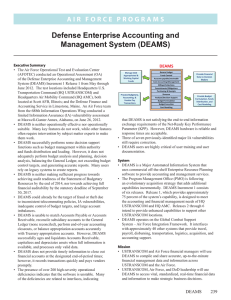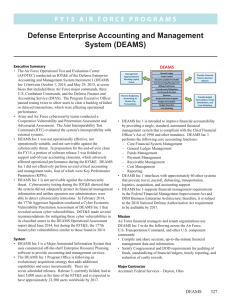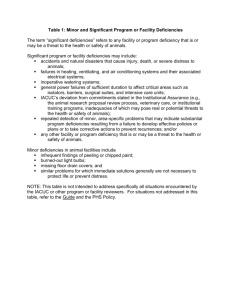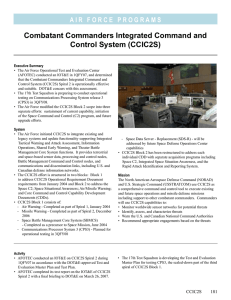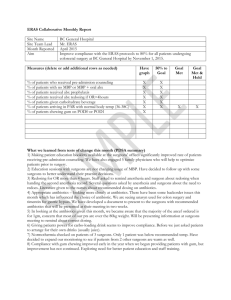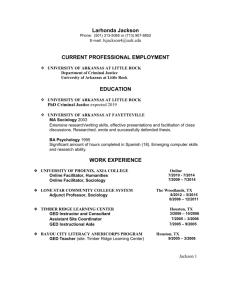Defense Enterprise Accounting and Management System (DEAMS)
advertisement
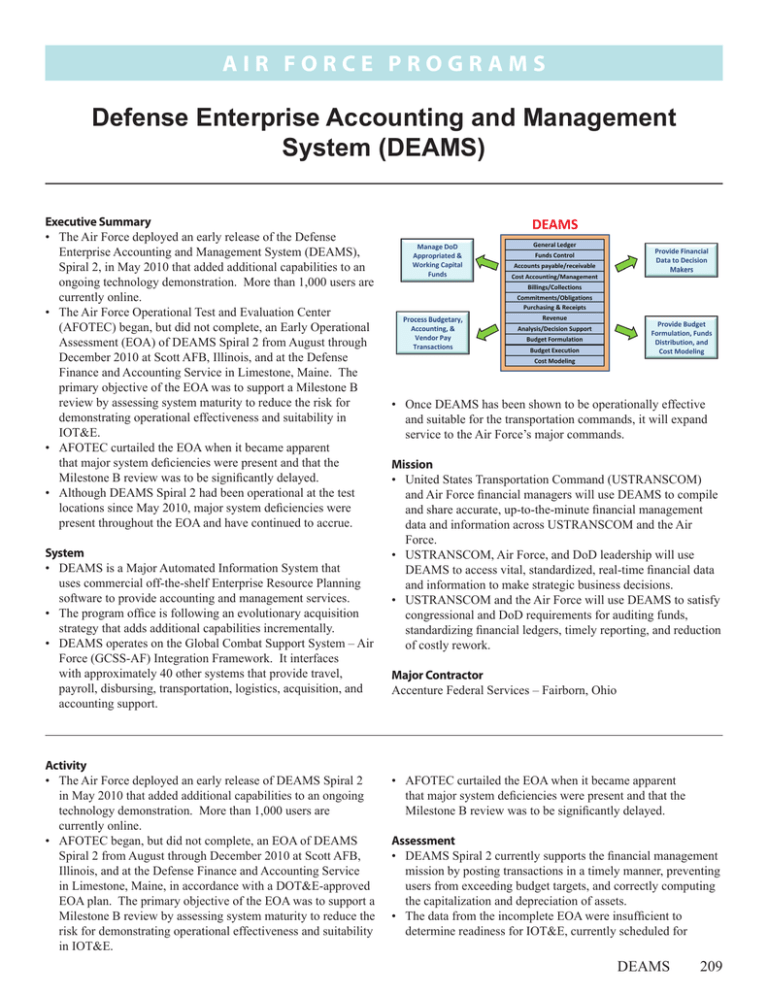
Ai r F o r c e P ROGRAMS Defense Enterprise Accounting and Management System (DEAMS) Executive Summary • The Air Force deployed an early release of the Defense Enterprise Accounting and Management System (DEAMS), Spiral 2, in May 2010 that added additional capabilities to an ongoing technology demonstration. More than 1,000 users are currently online. • The Air Force Operational Test and Evaluation Center (AFOTEC) began, but did not complete, an Early Operational Assessment (EOA) of DEAMS Spiral 2 from August through December 2010 at Scott AFB, Illinois, and at the Defense Finance and Accounting Service in Limestone, Maine. The primary objective of the EOA was to support a Milestone B review by assessing system maturity to reduce the risk for demonstrating operational effectiveness and suitability in IOT&E. • AFOTEC curtailed the EOA when it became apparent that major system deficiencies were present and that the Milestone B review was to be significantly delayed. • Although DEAMS Spiral 2 had been operational at the test locations since May 2010, major system deficiencies were present throughout the EOA and have continued to accrue. System • DEAMS is a Major Automated Information System that uses commercial off-the-shelf Enterprise Resource Planning software to provide accounting and management services. • The program office is following an evolutionary acquisition strategy that adds additional capabilities incrementally. • DEAMS operates on the Global Combat Support System – Air Force (GCSS-AF) Integration Framework. It interfaces with approximately 40 other systems that provide travel, payroll, disbursing, transportation, logistics, acquisition, and accounting support. Activity • The Air Force deployed an early release of DEAMS Spiral 2 in May 2010 that added additional capabilities to an ongoing technology demonstration. More than 1,000 users are currently online. • AFOTEC began, but did not complete, an EOA of DEAMS Spiral 2 from August through December 2010 at Scott AFB, Illinois, and at the Defense Finance and Accounting Service in Limestone, Maine, in accordance with a DOT&E-approved EOA plan. The primary objective of the EOA was to support a Milestone B review by assessing system maturity to reduce the risk for demonstrating operational effectiveness and suitability in IOT&E. • Once DEAMS has been shown to be operationally effective and suitable for the transportation commands, it will expand service to the Air Force’s major commands. Mission • United States Transportation Command (USTRANSCOM) and Air Force financial managers will use DEAMS to compile and share accurate, up-to-the-minute financial management data and information across USTRANSCOM and the Air Force. • USTRANSCOM, Air Force, and DoD leadership will use DEAMS to access vital, standardized, real-time financial data and information to make strategic business decisions. • USTRANSCOM and the Air Force will use DEAMS to satisfy congressional and DoD requirements for auditing funds, standardizing financial ledgers, timely reporting, and reduction of costly rework. Major Contractor Accenture Federal Services – Fairborn, Ohio • AFOTEC curtailed the EOA when it became apparent that major system deficiencies were present and that the Milestone B review was to be significantly delayed. Assessment • DEAMS Spiral 2 currently supports the financial management mission by posting transactions in a timely manner, preventing users from exceeding budget targets, and correctly computing the capitalization and depreciation of assets. • The data from the incomplete EOA were insufficient to determine readiness for IOT&E, currently scheduled for DEAMS 209 Ai r F o r c e P ROGRAMS • • • • • 1QFY14, and a full evaluation of operational effectiveness, suitability, and mission capability. Substantial manual intervention by personnel from the Functional Management Office is required on a daily basis to keep the system working. Without the manual intervention, the system would not work correctly. Important interfaces were inoperable. During the EOA, non-functioning interfaces with the Component Billing and Automated Funds Management systems required manual procedures from onsite personnel. An interoperability assessment completed by the Joint Interoperability Test Command in July 2011 listed only 58 of the 82 interface requirements as meeting all requirements. Required reports were not being produced or were inaccurate or incomplete. During the EOA, the users could not produce a complete and accurate Open Document List, which led to an incomplete Tri-Annual Review process. Training and user guides need improvement in consistency, accuracy, and overall functionality. The lack of adequate training and good-quality user guides inhibited users to effectively execute their mission tasks. Required financial management functionality is not present or not working properly. This was apparent in the numbers 210 DEAMS of major system deficiencies that were present during the EOA. Since the Air Force released Spiral 2 in May 2010, 2,313 deficiencies have been reported and 1,680 have been closed, leaving a gap of 633 open deficiencies. Although the program has made progress on closing the deficiencies, new ones continue to accrue. Recommendations • Status of Previous Recommendations. This is the first annual report for this program. • FY11 Recommendations. 1. The DEAMS program manager should ensure that all critical interfaces and functionality are implemented and continue testing until all high-severity deficiencies have been identified and corrected. 2. Once the deficiencies have been corrected and verified, AFOTEC should conduct another operational assessment to determine whether there has been significant progress to reduce the risk for demonstrating operational effectiveness and suitability in IOT&E.
